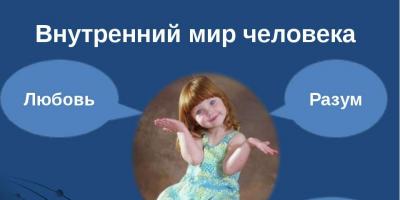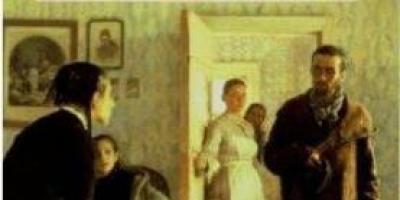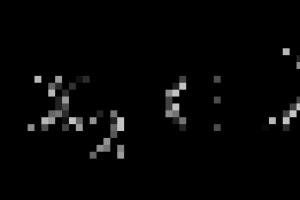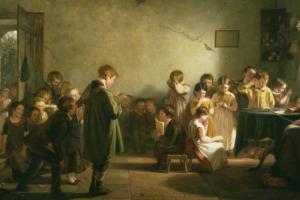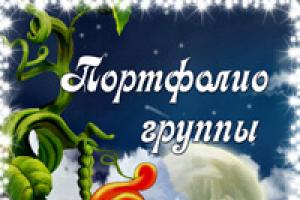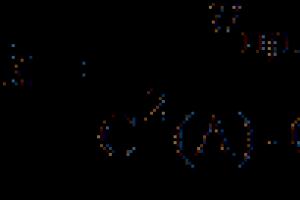The structure of a children's portfolio for 3-5 years old for kindergarten. Recommendations for compilation, advice.
It's no secret that maintaining a portfolio is encouraged in kindergartens. Now it has become not just fashionable, but already necessary to create a children's portfolio even when children enter kindergarten!
The portfolio of a child aged 3, 4, 5 is a kind of piggy bank of your child’s successes in the main areas of his development.
The criteria that are presented in the approximate basic general education programs “Istoki” (M., 2011), “From birth to school” (M., 2010) have been revised in accordance with the Federal state requirements for compulsory general education programs for preschool institutions.
Maintaining a portfolio will help you establish a closer relationship with your child, spend more time together, create an atmosphere of common interests, and you will be able to timely celebrate your child’s successes and maintain interest in various activities in the following areas:
- social and personal development,
- cognitive and speech development,
- physical development,
- artistic and aesthetic development.
You will help your child develop a tool for self-knowledge “What I am” and gain experience that will be useful to you in the future.
The portfolio will be useful to parents, tutors, teachers, and most importantly - to the kids themselves!
In your portfolio you can include the best drawings, photographs of crafts, observations, notes about your child’s vocabulary, and his growing skills.
What will the portfolio be like?
A children's portfolio must certainly be colorful and bright. Ideally, it will become both a child’s favorite “picture book” and a source of pride.
Explain to your child what kind of “magic book” you are starting to collect together and why. There is no need to be afraid that the child “will not understand” or “will quickly grow cold.”
He will understand! From the age of 3, all children, without exception, love bright books.
It won't cool down! The book about yourself is the most interesting. She will “receive with delight” all creative works, will pay “special attention” to amazing fantasies, and after a while she will “lovingly remind” you of “how little you were just a year ago!”
Title page
A title page for a children's portfolio is almost the same as a beautiful suit for a holiday. This is a kind of face of the whole work. Taking the folder in hand and looking at the title page, teachers or your friends already form a first opinion not only about the baby, but sometimes about the entire family who took part in the preparation of the portfolio.
The title page of a kindergarten portfolio should not be overloaded with information. There will be many interesting pages inside for her, where everything can be painted colorfully and meaningfully. But by looking at the work even briefly, the viewer should glean information about who is the owner of such a weighty, luxurious folder, how old he is and where he lives or studies. Of course, it would be nice if next to this laconic information there is a photo of the owner of the children’s portfolio.
Many people prefer to draw up the first sheet on the computer, although the child wants to contribute his or her part to the creation of this document. Can a little sun, which was drawn with great care and love, spoil the title page? Let him also take part in the creative process, then the child will feel that he, like his mother, can be proud of the beautifully designed folder, because he also drew in it.
Section 1. “My World” (“Portrait”)
Here you can place any information that is interesting and important for the child.
– My name (information about what the name means, why the parents chose this name; if the child has a rare or interesting surname, you can explain what it means), you can give the meaning of character and predispositions according to the horoscope.
– My baptismal name (if a child has been baptized, he is often given a middle name that corresponds to his religion)
– My family (here you can tell the name of your mother, father, brothers, sisters, grandparents, or place a drawing of your family tree)
– My friends (photos of friends, information about their interests, hobbies)
– Where I live (tell about your hometown, its interesting places in photographs and descriptions)
– My kindergarten (tell me which kindergarten and group the child goes to)
Section 2 – “My favorite activities and games.”
What do we do with mom (grandmother, in kindergarten, in a circle, etc.)
My favorite games at home and in kindergarten (you can talk about the games that the child prefers: cubes, mosaics, children's dominoes, etc.):
– My classes on the early development systems of Montessori, Doman, Zaitsev, Nikitins, Walfdor pedagogy, etc. (you can give an example of several of my favorite classes)
– My favorite books (list the titles and authors of children’s books that the child likes)
– I like to study (list the activities that the child likes: reading, drawing, sculpting, dancing, etc.)
– My walks (outdoor activities and games)
Section 2 – “My holidays”
In this section you can include photographs from birthdays, photographs of holidays in kindergarten: March 8, New Year, etc.
4th Birthday
5th Birthday
6th Birthday
Section 4 – “I am growing”
This section may include headings:
"Dynamics of physical development"
This section reflects the data of anthropometric measurements. They can be presented in the form of interesting graphs, diagrams, drawings or tables. It is interesting to include here not only information about the child’s height and weight, but also the size of the palm or the outline of the foot.
You can also include photographs of the child on his birthday in this section.
2. My palm (on this page you can trace a child’s palm on his birthday and see how it has grown every year)
"Dynamics of General Development"
(social and personal development, cognitive and speech development).
– Through the mouth of a baby (interesting words, phrases, baby statements)
- I know the letters
– I read at 3, 4, 5 years old (by letters, by syllables, by words)
– My favorite song
– My favorite poem
– I play musical instruments
- I am dancing
- The world around me
– The world is inside me
"Creative Development"
(includes drawings, photographs of creative works, photographs of participation in theatrical productions of the kindergarten or club that the child attends)
Drawings in different genres (watercolor, gouache, pastel, wax crayons, etc.)
Modeling (plasticine, clay, sculpture mass)
Application
Construction
Photos of crafts (made from paper, cardboard, natural materials, etc., participation in exhibitions)
Theater productions (list roles, attach photos)
"My records"
Fill this section with certificates or diplomas, of which children in kindergarten receive a lot. To give your child an incentive to try, you can reward him at home for participating in various games or competitions with friends.
It is better to arrange the contents of this section in chronological order.
Information about participation in sports competitions and competitions, holidays and events, etc.
The materials in this block allow you to build a rating of individual results, a rating of achievements, and track the dynamics of changes in learning outcomes.
Section 5 – “My impressions”
Information about visiting a theater, exhibition, museum, hike, excursion.
My travels
My discoveries
My excursions
Impressions of visiting theaters and exhibitions
Section 5 – “Feedback and Suggestions”
(in any form)
– Educators
– Parents
– Additional education teachers
Nothing increases a child’s self-esteem more than a teacher’s positive assessment of his efforts. Here you can write a review or wish, perhaps recommendations, both from a teacher and a parent, both based on the results of the school year and on participation in any event.
Belova Svetlana Anatolevna ,
senior teacher
AUDOMO Zavodoukovsky urban district
"Child Development Center - Kindergarten "Beryozka"
Success doesn't come to you...
You are heading towards success.
M. Collins
Currently, portfolio technology is widely used in the field of education, including in the practice of preschool education. Significance of this technology is as follows. Firstly, it is aimed at the interaction of all participants in the educational process. Children, teachers and parents jointly participate in the creation of a single creative product. Secondly, this is one of the ways to improve the quality of the educational process, since the use of this technology contributes to the achievement of positive results for both the individual (child, teacher) and the team as a whole (group, preschool educational institution). What is a portfolio?
There are different approaches to defining the concept of “portfolio” (T.G. Novikova, A.S. Prutchenkov, I.Yu. Gaitukaeva, I.G. Yudina, G.K. Selevko, V.K. Zagvozdkin, etc.)
Despite the different concepts in substantiation, all researchers agree that a portfolio, first of all, is With a method of recording, accumulating and evaluating individual achievements for a certain period.
The main meaning of a portfolio, according to T.G. Novikova, - “show everything you are capable of.”
Most often we are talking about a preschooler’s portfolio, less often about a group’s portfolio.
There is not always the opportunity and time to create a portfolio for a preschooler. In such cases, a group portfolio will help, where all the achievements of this group of children are presented.
Goals and objectives
1. The purpose of the portfolio is to collect, systematize and record the results of the development of the kindergarten group, efforts, achievements in various fields, creating an atmosphere of openness and community among all participants in the educational process.
2. A portfolio helps solve important pedagogical problems:
Create a situation for the group to experience success;
Maintain the interest of group teachers in the formation of a group portfolio;
Strengthen interaction with the families of the group’s pupils, increase the interest of parents (legal representatives) in the results of the group’s development and joint activities with the preschool institution.
The procedure for creating a portfolio
1. The group’s portfolio is one of the components of the development rating of the subject-developmental and educational environment of the group.
2. The period for compiling a portfolio is throughout the entire academic year.
3. Responsibility for organizing the formation of a portfolio and systematically familiarizing parents (legal representatives) with its contents rests with the group teacher.
4. The records of documents included in the group’s portfolio are carried out by the group’s teacher.
Group portfolio structure
The portfolio of the kindergarten group consists of:
v "Welcome!"
(contains general information representing the group: name of the group, age of children, teachers, photographs or drawings of individual corners of the group);
v "Let's get acquainted!"
(represents a photo portrait of the entire group, it can also be designed in the form of children's drawings or a general collage);
v "Our girls"
v "Our boys"
v "Our successes and achievements";
v "Our dreams".
It is possible to expand the proposed structure with additional sections, for example,
"What do our names mean",
"Our holidays",
"Who will I be when I grow up",
"Our talkers"
(funny sayings of children),
"We are artists", and others.
Activities of a teacher to create a portfolio
1. The teacher creates a group portfolio according to the list of documents.
2. Replenishment and modification of the group portfolio is possible only for the group teacher, free access for viewing;
3. The group’s portfolio is replenished with materials gradually, systematically, as the group’s students participate in the educational process, all achieved results are noted in a timely manner
Parents can be involved in creating a group portfolio. The participation of parents in the preparation of materials, design, reveals a creative approach to work, participation in the life of the child in kindergarten.
Literature
ON THE. Kochkina, A.N. Chernysheva. Portfolio in preschool educational institution. - M.: Publishing house "Scriptorium 2003", 2008. - 72 p.
Kokhan O.N. Portfolio of the preschool educational institution group. // Directory of the senior teacher of a preschool institution. – M., 2010. - No. 12.
“Certificate of Publication” Series A No. 0000843, date of dispatch December 18, 2012, receipt No. 62502655103704
We invite preschool teachers of the Tyumen region, Yamal-Nenets Autonomous Okrug and Khanty-Mansi Autonomous Okrug-Yugra to publish their teaching material:
- Pedagogical experience, original programs, teaching aids, presentations for classes, electronic games;
- Personally developed notes and scenarios of educational activities, projects, master classes (including videos), forms of work with families and teachers.
Why is it profitable to publish with us?
 |
 |
 |
|
| Group portfolio - 121 MB- Download |
39 MB- Download |
33.2 MB- Download |
5 MB- Download |
Today it has become very popular to draw up a portfolio for each kindergarten group. Most often, this work falls on the shoulders of the teacher, although some manage to entrust this task to parents, who cannot refuse, but do not know how to do it correctly. In this case, fortune has smiled on you once again, because by visiting our website, you will receive some tips on how to design the story of a small children's group, where the child learns, develops and makes friends. In addition, here you can download templates for designing a portfolio completely free of charge.
A colorful portfolio in a preschool educational institution differs from the same folder of a teacher, educator, director or student. It has its own sections, looking through which, you get a complete impression of the group of children, teachers, their joint successes and achievements.
It is advisable to start designing a business card with a title page, which provides information about the name of the group and the age of the children. This sheet will become much more attractive and beautiful if it is decorated with a photo of the group.
Further sheets can be arranged in any order if the content of the portfolio for kindergarten groups is not specified in the regulations. In this case, you can provide information about each child individually in this folder, devote several pages to general successes, victories, achievements, and talk about the most interesting events in the preschool educational institution.
Introduction
In accordance with the requirements of the Federal Educational Standard, the results of preschool education are presented in the form of targets, which represent social and normative age characteristics of the child’s possible achievements at the stage of completing the level of preschool education. This fact is due to the specifics of preschool childhood and the systemic features of preschool education, which make it unlawful to demand specific educational achievements from a preschool child, as at other levels of education. The targets of preschool education are not subject to direct assessment, as at other levels of education, and are not the basis for their formal comparison with the actual achievements of children. Requirements for results are guidelines for building educational policy at the appropriate levels, taking into account the goals of preschool education that are common to the entire educational space of the Russian Federation, solving problems for forming the main educational program of an educational organization, analyzing professional activities, as well as interaction with families and informing parents ( legal representatives) and the public regarding the goals of preschool education, common to the entire educational space of the Russian Federation.
Targets cannot serve as a direct basis for assessing both the final and intermediate levels of children’s development, including through monitoring, including in the form of testing, using methods based on observation, or other methods of measuring children’s performance. In this regard, in a preschool institution there is no need to use technologies for monitoring and evaluation activities, which are offered by the modern education system. However, some forms of this technology may become relevant when organizing cooperation with families of preschool children. The methodological development proposed for the competition examines some options for working with modern Portfolio technology.
Part 1. Features of the “Portfolio” technology.
Currently, Portfolio technology is widely used in the field of education. There are different approaches to defining the concept of “Portfolio” (T.G. Novikova, A.S. Prutchenkov, I.Yu. Gaitukaeva, I.G. Yudina, G.K. Selevko, etc.).
Despite the different concepts in justification, all researchers agree that “Portfolio” is, first of all, a way of recording, accumulating and assessing individual achievements over a certain period.
The main meaning of a portfolio, according to T.G. Novikova, - “show everything you are capable of.”
Significance of this technology in preschool education is as follows. Firstly, it is aimed at the interaction of all participants in educational activities. Children, teachers and parents jointly participate in the creation of a single creative product. Secondly, this is one of the ways to improve the quality of the educational process, since the use of this technology contributes to a positive orientation towards achieving positive results in the activities of both the individual and the team as a whole.
The purpose of developing a “Portfolio” is to collect, systematize and record the results of the development of either an individual or a kindergarten group, as well as efforts, achievements in various fields of activity, creating an atmosphere of openness and community of all participants in the educational process over a certain period of time. Responsibility for organizing the formation of a portfolio in a preschool institution and systematically introducing parents (legal representatives) to its contents rests with the group teacher. The records of documents included in the group portfolio are carried out by the group teacher. The portfolio structure can be varied. Recommendations of the Federal State Educational Standard for primary general education to create the “Portfolio” structure are as follows. An elementary school student's achievement portfolio is a specially organized selection of works that demonstrate the student's efforts, progress and achievements in various areas. The portfolio of achievements may include results achieved not only in the course of educational activities, but also in other forms of activity: creative, social, communicative, physical education and health, labor activities, occurring both within the framework of everyday school practice and beyond.
It is advisable to include the following materials in the portfolio of achievements of primary school students, which is used to assess the achievement of the planned results of primary general education.
1. Samples of children's works- formal and creative, completed during compulsory classes in all subjects studied, as well as during classes attended by students, implemented as part of the educational program of the educational organization.
2. Systematized observation materials(evaluation sheets, materials and observation sheets, etc.) for the process of mastering universal educational activities, which are conducted by primary school teachers, a school psychologist, the organizer of educational work and other direct participants in educational relations.
3. Materials characterizing the achievements of students in the framework of extracurricular and leisure activities, for example, the results of participation in olympiads, competitions, shows, exhibitions, concerts, sporting events, crafts, etc.
A kindergarten group’s portfolio may consist of the following sections:
"Welcome!"
(Contains general information representing the group: name of the group, age of children, teachers, photographs or drawings of individual corners of the group).
"Let's get acquainted!"
(This is a photographic portrait of the entire group; it can also be designed in the form of children’s drawings or a general collage).
"Our girls"
"Our boys"
"Our successes and achievements";
"Our dreams".
It is possible to expand the proposed structure with additional sections, for example,
"What do our names mean",
"Our holidays",
"Who will I be when I grow up",
"We are artists", and others.
Part 2. The teacher’s activities to create a “Portfolio” as a means of developing cooperation with the family.
In the context of the implementation of new normative and substantive approaches, preschool education has been set targets that require openness, close cooperation and interaction with parents. The tasks facing the education system today increase the responsibility of parents for the effectiveness of the educational process in each preschool educational institution, since it is the parent community that is directly interested in improving the quality of education and development of their children. (Federal State Educational Standards BEFORE Part I, clause 1.6, clause 9.)
A characteristic trend of the modern period in the development of domestic education is the desire of educational institutions for openness, which also presupposes the participation of society in the life of preschool educational institutions. (Federal State Educational Standards BEFORE part III, clause 3.1, clauses 5, 6.)
An important role in the process of developing openness is played by parents, who are the main social customers of preschool educational institutions. And interaction between teachers and them is simply impossible without taking into account the interests and requests of the family.
In preschool education, when creating a group’s “Portfolio,” the main role belongs to the teacher. The teacher forms the group’s portfolio according to the structure that is determined in advance. The teacher also systematically replenishes and changes the group’s “Portfolio” as the group’s pupils participate in the educational process, and promptly notes all achieved results. The teacher involves parents in the preparation of the group “Portfolio”. The participation of parents in the preparation of materials, design, reveals a creative approach to work, participation in the life of a child in kindergarten.
The problem of involving parents in a single space of child development in preschool educational institutions is solved in three directions:
- improving the pedagogical culture of parents.
- involving parents in the activities of preschool educational institutions,
- joint work to exchange experience.
To organize competent, systematic cooperation with the family when working on a group “Portfolio”, the teacher must:
- Organize educational consulting activities with parents on the topic “What is a Portfolio?” The role of the “Portfolio” group in the development of a child’s personality.”
- Establish partnerships with the family of each student.
- To combine the efforts of family and kindergarten for the development and education of children.
- Create an atmosphere of mutual understanding, common interests, a positive attitude towards communication and friendly mutual support of parents, students and kindergarten teachers.
Modern parents, for the most part, are literate, knowledgeable people and, of course, well aware of modern trends in raising children. The main goal of preschool teachers is to professionally help the family in raising children, without replacing it, but complementing it and ensuring a more complete implementation of its educational functions.
Cooperation with parents to create a group “Portfolio” is based on dialogue, openness, sincerity, refusal of criticism and evaluation of the communication partner. According to the classification of T.V. Krotova's “Portfolio” group, as a non-traditional form of interaction with parents, belongs to the visual and informational forms of work and carries out informational and educational functions.
In our preschool we constantly work systematically with parents. For information, familiarization and education of parents in the modern conditions of the introduction of the Federal State Educational Standard, we are actively implementing the “Portfolio” technology. Our “Portfolio” is an electronic and printed version, which is updated monthly and offered to parents.
We have chosen the following structural components of the “Portfolio”:
"Our birthday people" - congratulations to those children who were born this month. "Through the mouth of a baby" - examples of creative speech development of children.
"From the life of the group"- a description of the activities that were carried out in the group, summing up the results for the month - what the children learned, what they saw, where they took part, what holidays and events took place. The educational and leisure moments of the group and kindergarten are shown.
"Doctor's Page"- description of health-preserving measures and medical recommendations for the development of a physically and mentally healthy personality. Information is also provided for parents about quarantine measures in the group, about disease prevention, and about seasonal diseases.
Creating a “Portfolio” is very exciting and brings children and parents closer together; families learn more about each other and begin to communicate with each other.
Stages of work on the “Portfolio”:
Stage 1 – Information and educational.
At the parent meeting, information is brought to the attention of parents about the modern technology “Portfolio”, its goals, objectives, features of implementation at the preschool level and the levels of primary general and basic general education. Then parents are offered a choice of sections that can be included in the group’s “Portfolio”. Parents actively discuss the sections that interest them, select and offer teachers the final version of the structure of the group “Portfolio”. Together with parents, the deadlines for updating the content of the “Portfolio” are determined. Our parents determined monthly period of work on the “Portfolio”.
Stage 2 - Organizational
It is important to teach how to observe, notice everything new and interesting, and be sure to record and write it down. With the help of a portfolio, parents see their child from the outside, his desires, interests. The portfolio can also be used as additional material when studying a family - its way of life, interests, traditions. Observing children and their parents in the process of creating a portfolio, it can be noted that such events contribute to the establishment of warmer relationships in the family.
One of the main results of working on a portfolio is that parents learn to observe and notice the changes that are taking place, and systematize them. Some help can be provided by reminders and questionnaires, based on which parents will be able to highlight especially bright and interesting moments in the development of their child.
Another important point in this work is that the relationship in the activities of preschool educational institutions specialists is especially important. A music director and physical education instructor help create conditions for the development of children's creativity in physical, musical, and theatrical activities. Additional education teachers give parents advice on creating conditions in the family for the manifestation of creative activity in various activities, as well as on organizing family leisure as a means of bringing together the interests of adults and children. Various types of creative competitions and sports competitions are organized for children in preschool educational institutions, in which they can evaluate themselves and their friends. The relationship between specialists is possible only if each of them clearly understands their role in the formation of the “Portfolio”.
Problems of implementing Portfolio technology at this stage : first of all, unpreparedness and lack of understanding of the role of “Portfolio” by participants in the educational process. Therefore, during the collection of information, advisory support to teachers is necessary.
Stage 3. Final. (Evaluative.)
Parents' assessment of the child's results, presented in printed form. Parents' assessments sometimes differ from teachers' assessments: they are often inadequate due to parents' ignorance of the age characteristics of their children: underestimated, overestimated or critical.
The ability to evaluate is necessary to learn for both parents and teachers. At the first stages of the Portfolio assessment, parents are presented with an assessment sheet, which proposes criteria for assessing the Portfolio. Since this technology is non-marking, we recommend qualitative rather than quantitative assessment.
In the future, the criteria for evaluation are proposed by the parents themselves. To evaluate the “Portfolio,” you can also invite parents to determine the level of “Portfolio” on the rating scale, indicating with a cross the corresponding level or its interval, in their opinion
High level– The portfolio is characterized by comprehensiveness in reflecting all categories of materials and a high level of all criteria. The content of the Portfolio demonstrates great efforts and obvious progress, a high level of evaluation, and a creative attitude to the activity. The content and design of the Portfolio clearly demonstrates originality and creativity.
Average level– the categories are presented differently in the Portfolio - some are at a high level, and some characterize medium or low levels of information presentation. Content from some categories may be missing. No creativity in design.
Weak level– A portfolio from which it is difficult to form an idea of the work process and achievements. As a rule, it presents fragmentary information from various categories, individual, unfinished works, etc. Based on such a Portfolio, it is almost impossible to determine the progress in the development of the group.
In order to develop analytical and evaluation activities, workshops, conversations, and individual consultations are held with parents. Parents get to know better the psychological characteristics of preschool children and realize the need to create a “Portfolio” as a result of the teacher’s analytical and evaluative activities.
“Portfolio” is a unique route for the development of a group as a whole and an individual in particular. This is an opportunity to better understand the child, this is a way for teachers to interact with each other, teachers and parents.
When working with preschoolers, we use an electronic “Portfolio” and a printed version.
Electronic “Portfolio” is one of the new types of pedagogical products. This is a “Portfolio” based on the use of modern information technologies.
Using the Power Point program allows you to quickly create a bright, colorful “Portfolio” with special effects and the ability to use audio and video recordings. The electronic “Portfolio” is mobile, you can quickly change it and add new things.
Working on creating a “Portfolio” in Microsoft Publisher (formerly Microsoft Office Publisher) allows you to focus on designing page layout, design and text. Microsoft Publisher is software included in the Microsoft Office suite. Office Publisher includes new and improved tools to help you efficiently create, customize, and reuse a variety of content tailored to your specific needs. By storing frequently used text, design elements, and graphics in a new content store for later use in other publications, you can save significant time and effort. You can choose from over 75 professionally created color schemes or create your own.
When organizing work on the “Portfolio”, you need to take into account some features of collecting information. It often happens that portfolio authors believe that only official documents (diplomas, certificates, certificates, certificates, etc.) should be collected. At the same time, creative works, self-reports, reviews, recommendations, etc. are ignored. The peculiarity of the “Portfolio” is the need to obtain diverse and comprehensive information about the process of activity and its result. The Portfolio developers sometimes try to turn it into an archive of all achievements, but the Portfolio must show positive development dynamics since the last performance assessment. In this regard, the “Portfolio” should be systematic and not one-time. “Portfolio” implies systematic work, constant addition and analysis of available materials, otherwise there is no point in starting work. In the Appendix we offer some options for the “Portfolio” we created.
Literature.
- Magazine "Preschool Education Management" 2006 No. 2 "Portfolio of a teacher of a preschool educational institution."
- Magazine "Preschool Education Management" 2007 No. 7 "Use of portfolio in teaching activities."
- Magazine "Hoop" 2005 No. 6 "Preschooler's Portfolio."
- Magazine "Hoop" 2005 No. 4 "Collage of Interests".
- Magazine "Obruch" 2007 No. 4 "Portfolio of success."
- Magazine "Directory of a senior teacher of a preschool educational institution" 2008. No. 7 “Creating a portfolio.”
- Magazine "Preschool Education" 2007 No. 12 "Pedigree in kindergarten: history and image of the family."
- Magazine "Preschool Pedagogy" 2008 No. 6/August "Portfolio as a new form of assessing the professional activity of a preschool teacher."
- Magazine "Preschool Pedagogy" 2004 No. 4/July-August "The image of a kindergarten through the eyes of a child, parent and preschool educational institution staff."
- Kokhan O.N. Portfolio of the preschool educational institution group. // Directory of a senior teacher of a preschool institution. – M., 2010. - No. 12.
- ON THE. Kochkina, A.N. Chernysheva. Portfolio at preschool educational institution. - M.: Publishing house “Scriptorium 2003”, 2008. – 72 p.
Description of the presentation by individual slides:
1 slide
Slide description:
Municipal budgetary preschool educational institution “Yarsky kindergarten No. 4 “Kalinka” “Group portfolio” consultation for teachers Compiled by senior teacher: Pozdeeva E.A. April 2017
2 slide
Slide description:
Features of the “Portfolio” technology. Currently, Portfolio technology is widely used in the field of education. There are different approaches to defining the concept of “Portfolio” (T.G. Novikova, A.S. Prutchenkov, I.Yu. Gaitukaeva, I.G. Yudina, G.K. Selevko, etc.).
3 slide
Slide description:
Features of the “Portfolio” technology. Despite the different concepts in justification, all researchers agree that “Portfolio” is, first of all, a way of recording, accumulating and assessing individual achievements over a certain period. The main meaning of a portfolio, according to T.G. Novikova, - “show everything you are capable of.”
4 slide
Slide description:
Features of the “Portfolio” technology. The significance of this technology in preschool education is as follows. Firstly, it is aimed at the interaction of all participants in educational activities. Children, teachers and parents jointly participate in the creation of a single creative product.
5 slide
Slide description:
Features of the “Portfolio” technology. Secondly, this is one of the ways to improve the quality of the educational process, since the use of this technology contributes to a positive orientation towards achieving positive results in the activities of both the individual and the team as a whole
6 slide
Slide description:
Goals: to collect, systematize and record the results of the development of either an individual or a kindergarten group, as well as efforts, achievements in various fields of activity, creating an atmosphere of openness and community of all participants in the educational process during a certain period of time
7 slide
Slide description:
Objectives: The portfolio helps solve important pedagogical problems: - create a situation for the group to experience success; - maintain the interest of group teachers in the formation of a group portfolio; - strengthen interaction with the families of the group’s pupils, increase the interest of parents (legal representatives) in the results of the group’s development and joint activities with the preschool institution.
8 slide
Slide description:
The procedure for forming a portfolio 1. The group’s portfolio is one of the components of the development rating of the subject-developmental and educational environment of the group. 2. The period for compiling a portfolio is throughout the entire academic year. 3. Responsibility for organizing the formation of a portfolio and systematically familiarizing parents (legal representatives) with its contents rests with the group teacher. 4. The records of documents included in the group’s portfolio are carried out by the group’s teacher.
Slide 9
Slide description:
The portfolio of a kindergarten group may consist of the following sections: Title page: name of the group, motto, coat of arms of the group, Class schedule, Our teachers.
10 slide
Slide description:
A kindergarten group’s portfolio may consist of the following sections: “Welcome!” (Contains general information representing the group: name of the group, age of children, teachers, photographs or drawings of individual corners of the group). "Let's get acquainted!" (This is a photographic portrait of the entire group; it can also be designed in the form of children’s drawings or a general collage). “Our girls” (Contains individual characteristics of girls: their names, hobbies, favorite toys, activities, etc.). "Our Boys" (Contains individual characteristics
11 slide
Slide description:
The portfolio of a kindergarten group may consist of the following sections: “Our successes and achievements“ (In this section we placed the certificates and gratitude of the group for participation in various preschool, regional and all-Russian events.) “Our dreams.” You can expand the proposed structure with additional ones. sections, for example, “What do our names mean”, “Our holidays”, “Who will I be when I grow up”
12 slide
Slide description:
The portfolio of a kindergarten group may consist of the following sections: “We are artists” “Exhibitions” Interesting events from the lives of children. section “Page for Parents” (On this page, parents left their feedback from the group, wishes and even funny poems.)
Slide 13
Slide description:
Activities of the teacher in creating a “Portfolio” In preschool education, when creating a “Portfolio” of a group, the main role belongs to the teacher. The teacher forms the group’s portfolio according to the structure that is determined in advance. The teacher also systematically replenishes and changes the group’s “Portfolio” as the group’s students participate in the educational process, and promptly notes all achieved results
Slide 14
Slide description:
Activities of the teacher in creating a “Portfolio” The teacher can involve parents in the preparation of a group “Portfolio”. The participation of parents in the preparation of materials, design, reveals a creative approach to work, participation in the life of the child in kindergarten. The problem of involving parents in a single space of child development in preschool educational institutions is solved in three directions: - increasing the pedagogical culture of parents. -involvement of parents in the activities of preschool educational institutions, -joint work on the exchange of experience.
15 slide
Slide description:
Stages of work on the “Portfolio”: Stage 1 – Information and educational. At the parent meeting, parents are informed about the modern technology “Portfolio”, its goals, objectives, and implementation features at the preschool level. Then parents are offered a choice of sections that can be included in the group’s “Portfolio”.
16 slide
Slide description:
Stages of work on the “Portfolio” Stage 2 - Organizational At this stage, organizational activities are carried out with all participants in the educational process: children, parents, teachers and specialists of the preschool institution to collect information.

